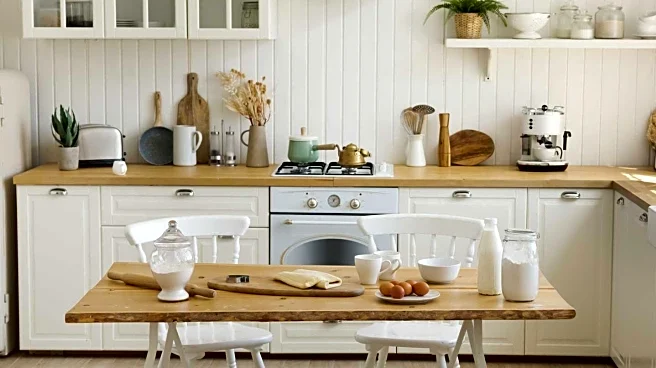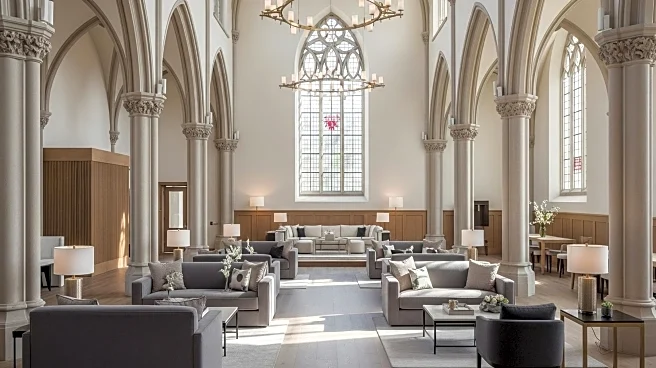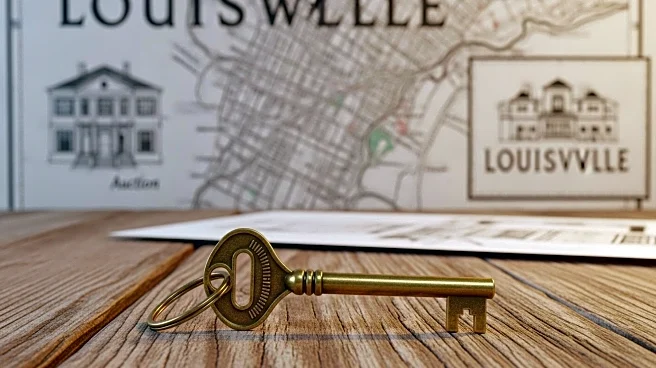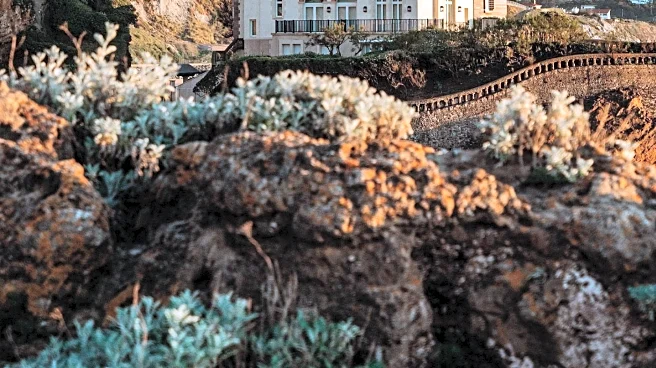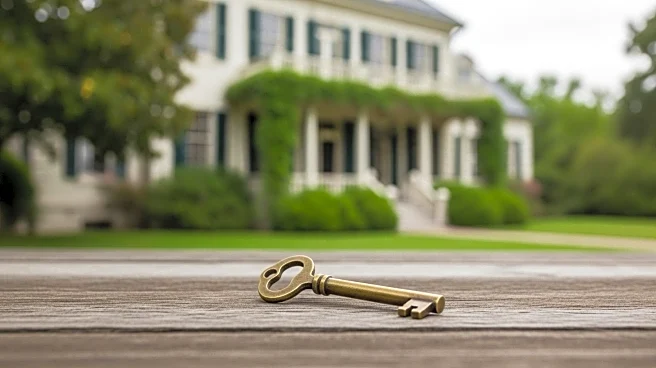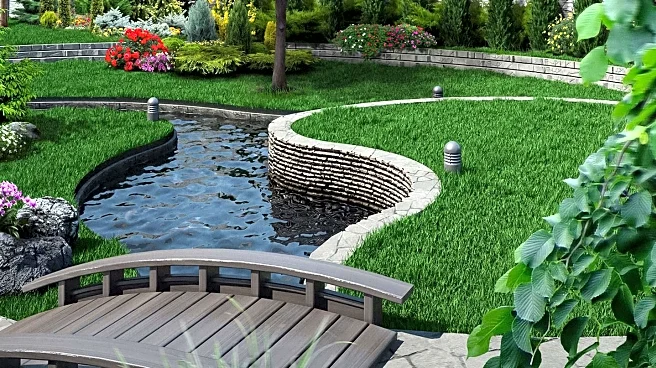What's Happening?
A historic 1870s church in Rifton, NY, known as The Rifton, has been transformed into a modern retreat by Rony Zeidan, founder of RO New York. Originally serving as a church, town hall, and private farmhouse, the 4,596-square-foot stone structure now features 30-foot ceilings, exposed beams, and wide-plank wood floors. Zeidan's renovation preserved the architectural legacy while modernizing the space, which includes a spiral staircase, spacious deck, and a wing for a home office or yoga studio. The property is listed with a significant price reduction, attracting attention for its unique blend of history and modern design.
Why It's Important?
The transformation of The Rifton highlights the potential for repurposing historic properties into modern living spaces, preserving cultural heritage while meeting contemporary needs. This approach can revitalize communities by attracting new residents and businesses, boosting local economies. It also underscores the importance of adaptive reuse in real estate, offering sustainable solutions to urban development challenges. The property's popularity may inspire similar projects, encouraging investment in historic preservation and innovative design.
What's Next?
The successful transformation of The Rifton could lead to increased interest in similar projects, prompting developers and architects to explore adaptive reuse of historic buildings. This trend may influence zoning and preservation policies, encouraging municipalities to support such initiatives. As more properties are repurposed, it could lead to a shift in real estate market dynamics, with historic properties becoming highly sought after for their unique character and potential for customization.
Beyond the Headlines
The renovation of The Rifton raises ethical considerations about balancing preservation with modernization. It challenges the notion of historical integrity, prompting discussions about the cultural value of maintaining original structures versus adapting them for contemporary use. This project also highlights the role of creativity in bridging past and present, offering insights into how design can honor history while embracing innovation.

